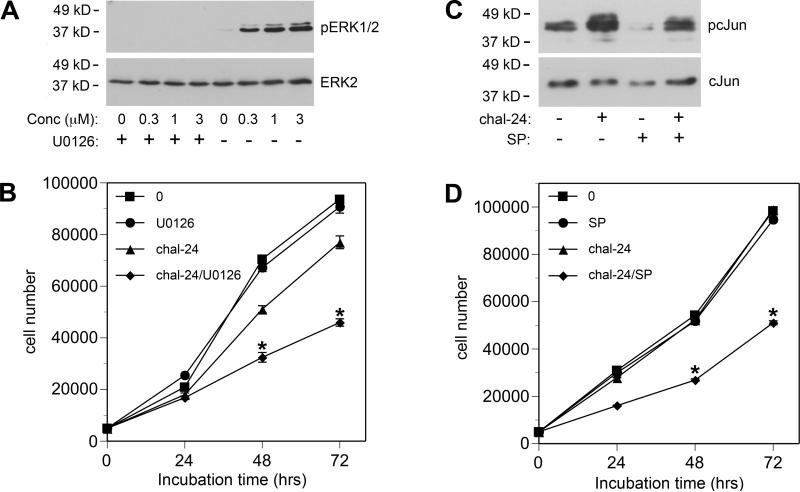Figure 3. Inhibition of ERK1/2 or JNK increases the sensitivity of A549 cells to chalcone-24.
(A) A549 cells were incubated for 30 minutes in the absence (-) or presence (+) of 3 μM U0126. The cells were then incubated for 30 minutes in the absence (-) or presence (+) of the indicated concentrations of chalcone-24. ERK1/2 activity was analyzed as described in the legend to Figure 2. (B) Twenty-four hours after plating A549 cells, the cells were incubated in absence (squares) or presence of 3 μM U0126 (circles), 0.3 μM chalcone-24 (chal-24) (triangles), or 0.3 μM chalcone-24 and 3 μM U0126 together (chal-24/U0126)(diamonds). Cell number was determined by MTT assay after 24, 48, and 72 hours of incubation. (C) A549 cells were incubated for 30 minutes in the absence (-) or presence (+) of 5 μM SP600125 (SP). The cells were then incubated for 30 minutes in the absence (-) or presence (+) of 0.3 μM chalcone-24 (chal-24). Protein from nuclear extracts (5 μg) was analyzed for either phospho-c-Jun by immunoblot using an antibody that binds to c-Jun phosphorylated on Ser-73 (pc-Jun) (upper panel) or total c-Jun (lower panel). (D) Twenty-four hours after plating A549 cells, the cells were incubated in absence (squares) or presence of 5 μM SP600125 (SP) (circles), 0.3 μM chalcone-24 (chal-24) (triangles), or with 0.3 μM chalcone and 5 μM SP600125 (chal-24/SP) together (diamonds). Cell number was determined by MTT assay after 24, 48, and 72 hours of incubation. (B) and (D) The symbols represent the average of triplicates ± SEM. Asterisks denote values from cells treated with chalcone in the presence of U0126 or SP600125 that were determined to be statistically significantly different from cells incubated with chalcone-24 alone (p < 0.001), by using a 2-way ANOVA and the Bonferroni post-test. The data shown are representative of at least two independent experiments.

